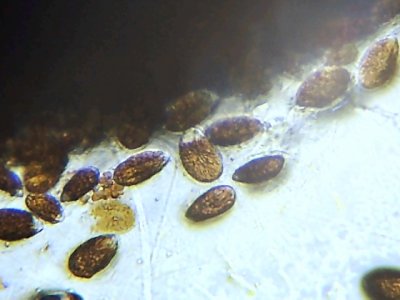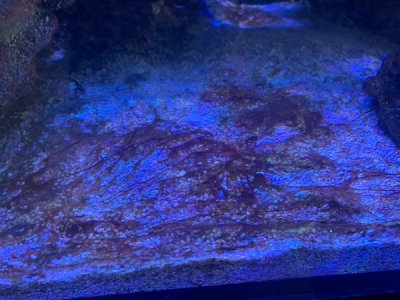So I have a feeling these are dinoflagellates, but I'm not experienced identifying algae enough that I am sure. So about 2 months ago, I had a velvet outbreak that wiped out my tank. Had to go fallow with no fish. went through several different types of outbreaks including, diatoms, GHA, chrysophytes, Cyano, and now this.... I'm thinking it's dino's because my nitrates and phosphates hit 0 without fishes. It's very stringy and a dark brown(almost black) color, It's all over my sand bed and growing all over my acros... Doesn't seem to have many air bubbles in it other the on the growth over my flow pumps... When I blow it off my acros with a turkey baster, in half an hour it's already covered it again... On my sand, rocks, and glass, it's just growing VERY VERY STRINGY... some strands are like a foot long... I did the dino test where i gathered a sample with tank water, shook it in a bottle and filtered it through a paper towel into a glass. It formed back into a black clump in less than an hour. I'm still not quite sure if its dino though because, it doesn't disappear at night like dino usually does. It just stays there as if the light was still on. Also, my snails have been goin to town on it and none are dying(i know dino's are toxic and can kill CUC). Also, most pictures of dino's i see are a light brown color. These are a very dark brown and almost black. Can some with experience PLEASE help me identify what this is so that I know how to treat it? I've tried raising temperature to 83 degrees, UV Sterilizer, hydrogen peroxide, adding nitrates/phosphates via dosing, dosing microbacter clean. None of it seems to be working.... HELP!!!!!





















